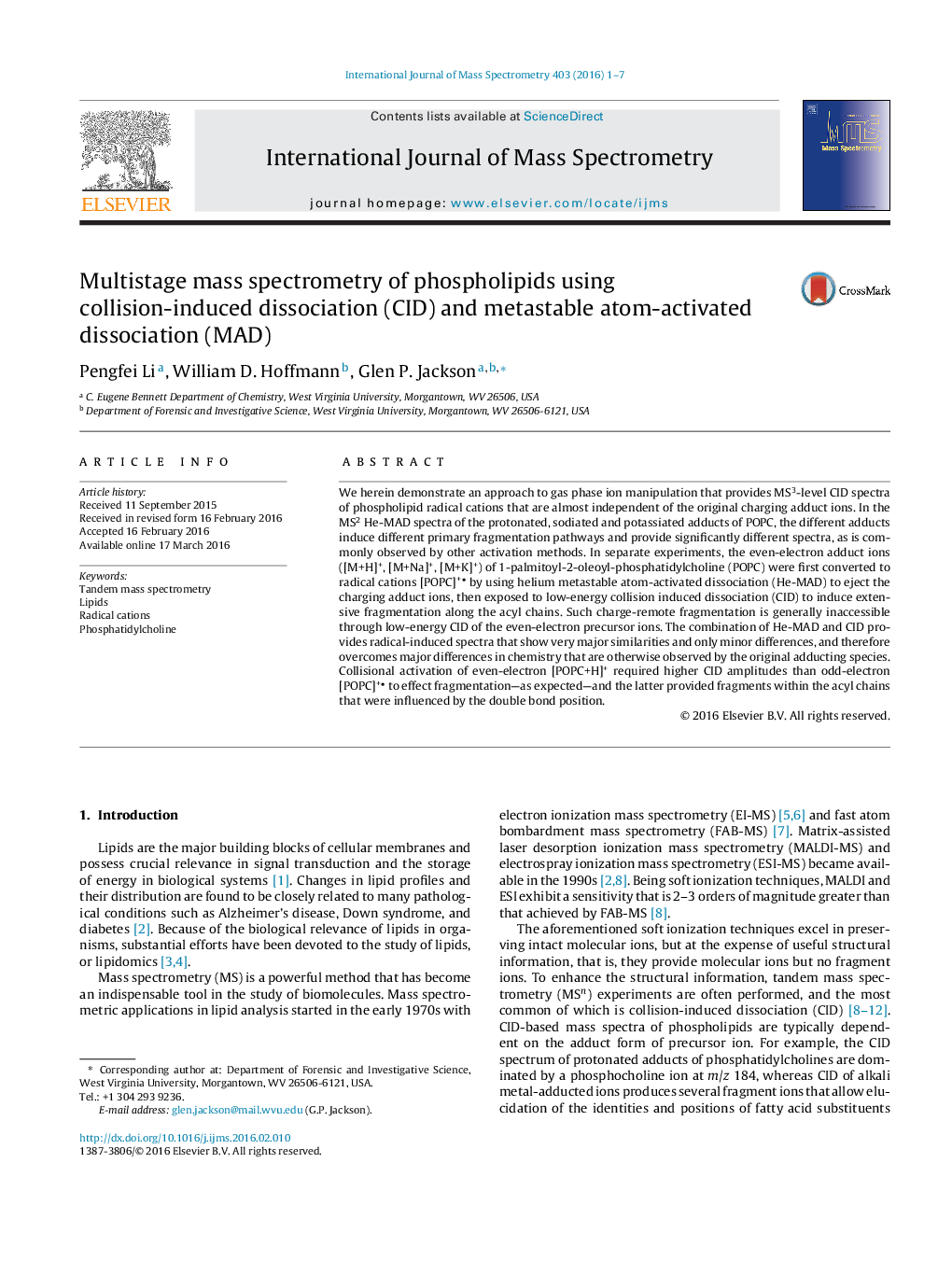| Article ID | Journal | Published Year | Pages | File Type |
|---|---|---|---|---|
| 1192695 | International Journal of Mass Spectrometry | 2016 | 7 Pages |
•Ability to form radical dications from protonated and sodiated phosphatidylcholine.•Ability to remove charging adduct ions and form radical molecular ions.•Ability to acquire MS3-level CID spectra from MS2-level He-MAD intermediates.•Ability to identify double bond position in acyl chains.
We herein demonstrate an approach to gas phase ion manipulation that provides MS3-level CID spectra of phospholipid radical cations that are almost independent of the original charging adduct ions. In the MS2 He-MAD spectra of the protonated, sodiated and potassiated adducts of POPC, the different adducts induce different primary fragmentation pathways and provide significantly different spectra, as is commonly observed by other activation methods. In separate experiments, the even-electron adduct ions ([M+H]+, [M+Na]+, [M+K]+) of 1-palmitoyl-2-oleoyl-phosphatidylcholine (POPC) were first converted to radical cations [POPC]+ by using helium metastable atom-activated dissociation (He-MAD) to eject the charging adduct ions, then exposed to low-energy collision induced dissociation (CID) to induce extensive fragmentation along the acyl chains. Such charge-remote fragmentation is generally inaccessible through low-energy CID of the even-electron precursor ions. The combination of He-MAD and CID provides radical-induced spectra that show very major similarities and only minor differences, and therefore overcomes major differences in chemistry that are otherwise observed by the original adducting species. Collisional activation of even-electron [POPC+H]+ required higher CID amplitudes than odd-electron [POPC]+ to effect fragmentation—as expected—and the latter provided fragments within the acyl chains that were influenced by the double bond position.
Graphical abstractFigure optionsDownload full-size imageDownload high-quality image (127 K)Download as PowerPoint slide
